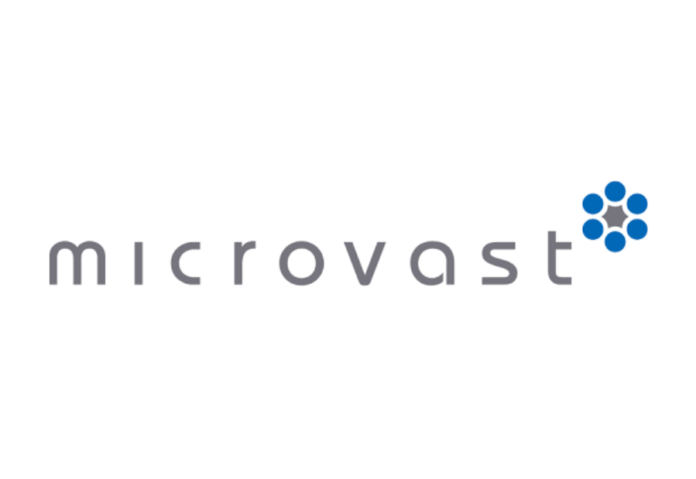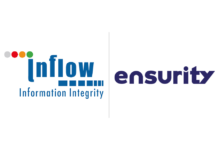STAFFORD, Texas–(BUSINESS WIRE): Microvast Holdings, Inc. (NASDAQ: MVST) (“Microvast” or the “Company”), a global leader in advanced battery technologies, today announced a significant milestone in the development of its True All-Solid-State Battery (ASSB) technology. This advancement represents a key step forward in improving safety, energy density, and efficiency for critical applications such as data center backup power systems and electric school buses, while also paving the way for future innovations in robotics and other high-demand sectors such as electric vehicles.
Unlike conventional lithium-ion or semi solid-state batteries, Microvast’s ASSB utilizes a bipolar stacking architecture that enables internal series connections within a single battery cell. Traditional lithium-ion and semi solid-state batteries, constrained by the limitations of liquid electrolytes, typically operate at nominal voltages of 3.2V to 3.7V per cell. In contrast, Microvast’s technology completely eliminates liquid electrolytes. This breakthrough allows a single cell to achieve dozens of volts or higher based on specific application needs. A voltage unattainable by any battery containing liquid electrolytes, which would otherwise decompose under such high voltages.
This bipolar design significantly reduces the number of interconnections between cells, modules, and packs. This simplifies the overall system architecture and enhances both energy efficiency and operational safety. Furthermore, Microvast has developed its proprietary all-solid electrolyte separator membrane based on an advanced polyaramid separator, which is non-porous and tailored specifically for solid-state applications. This separator ensures excellent ionic conductivity, structural stability, and long-term durability, addressing one of the most critical technical challenges in solid-state battery technology. Moreover, the ability to maintain stable high-voltage operation without compromising safety or long-term reliability underscores a key technical advantage of Microvast’s ASSB technology, positioning it as a transformative innovation in the battery industry.
“Our solid-state battery innovation represents a significant leap forward in addressing real-world safety and efficiency challenges,” said Yang Wu, CEO of Microvast. “By developing a technology that eliminates liquid electrolytes and prioritizes scalability, we are well-positioned to meet the evolving needs of industries requiring reliable and safe energy storage solutions.”
Microvast’s ASSB technology introduces a new frontier in customized cell design. With its flexible form factor and voltage configuration, Microvast’s solid-state batteries can be custom made to meet the specific energy and spatial requirements of advanced robotic systems. This makes the ASSB a key enabler for upcoming AI-driven systems and applications.
“Our bipolar architecture, combined with our proprietary all-solid separator, not only simplifies battery design, but also enhances energy density and operational safety,” said Dr. Wenjuan Mattis, CTO of Microvast. “Further, the absence of liquid electrolytes ensures our batteries can operate at voltages unattainable by conventional designs, underscoring the transformative potential of our technology. This flexibility in cell design empowers us to address emerging applications in fields such as advanced robotics and compact energy systems.”
Figure 1A (left) and Figure 1B (right) provide a detailed cross-sectional analysis of Microvast’s bipolar stacked five-layer solid-state battery cell. Figure 1A illustrates the morphological structure, highlighting distinct layers of the cathode, anode, and solid electrolyte. This precise layer alignment ensures optimized current distribution and mechanical stability. Figure 1B displays the elemental mapping (EDS analysis) of the same cross-section, displaying the uniform distribution of key materials (Ni, Co, Mn, Si, S) across the cathode, anode, and solid electrolyte interfaces. This consistency is critical for preventing localized failures and maintaining stable long-term performance under heavy operational loads.
Figure 2 represents the voltage-capacity curve of Microvast’s ASSB during charge and discharge cycles. The graph reveals a stable operational voltage range between 12V and 21V, a clear indicator of the battery’s advanced engineering and true solid-state nature. Any presence of liquid electrolyte would prevent stable operation in this high-voltage range, further reinforcing the uniqueness of Microvast’s technology.
Looking ahead, Microvast is advancing to the next phase: the pilot production study. This phase represents a bold step into a new technological frontier, where our engineering team will apply innovative approaches to overcome unique manufacturing challenges. With a commitment to advancing battery technology, Microvast aims to deliver dependable, safe, and high-performance solutions that set new industry standards.
Also read: Viksit Workforce for a Viksit Bharat
Do Follow: The Mainstream formerly known as CIO News LinkedIn Account | The Mainstream formerly known as CIO News Facebook | The Mainstream formerly known as CIO News Youtube | The Mainstream formerly known as CIO News Twitter
About us:
The Mainstream formerly known as CIO News is the premier platform dedicated to delivering the latest news, updates, and insights from the CIO industry. As a trusted source in the technology and IT sector, we provide a comprehensive resource for executives and professionals seeking to stay informed and ahead of the curve. With a focus on cutting-edge developments and trends, The Mainstream formerly known as CIO News serves as your go-to destination for staying abreast of the rapidly evolving landscape of technology and IT. Founded in June 2020, The Mainstream formerly known as CIO News has rapidly evolved with ambitious growth plans to expand globally, targeting markets in the Middle East & Africa, ASEAN, USA, and the UK






